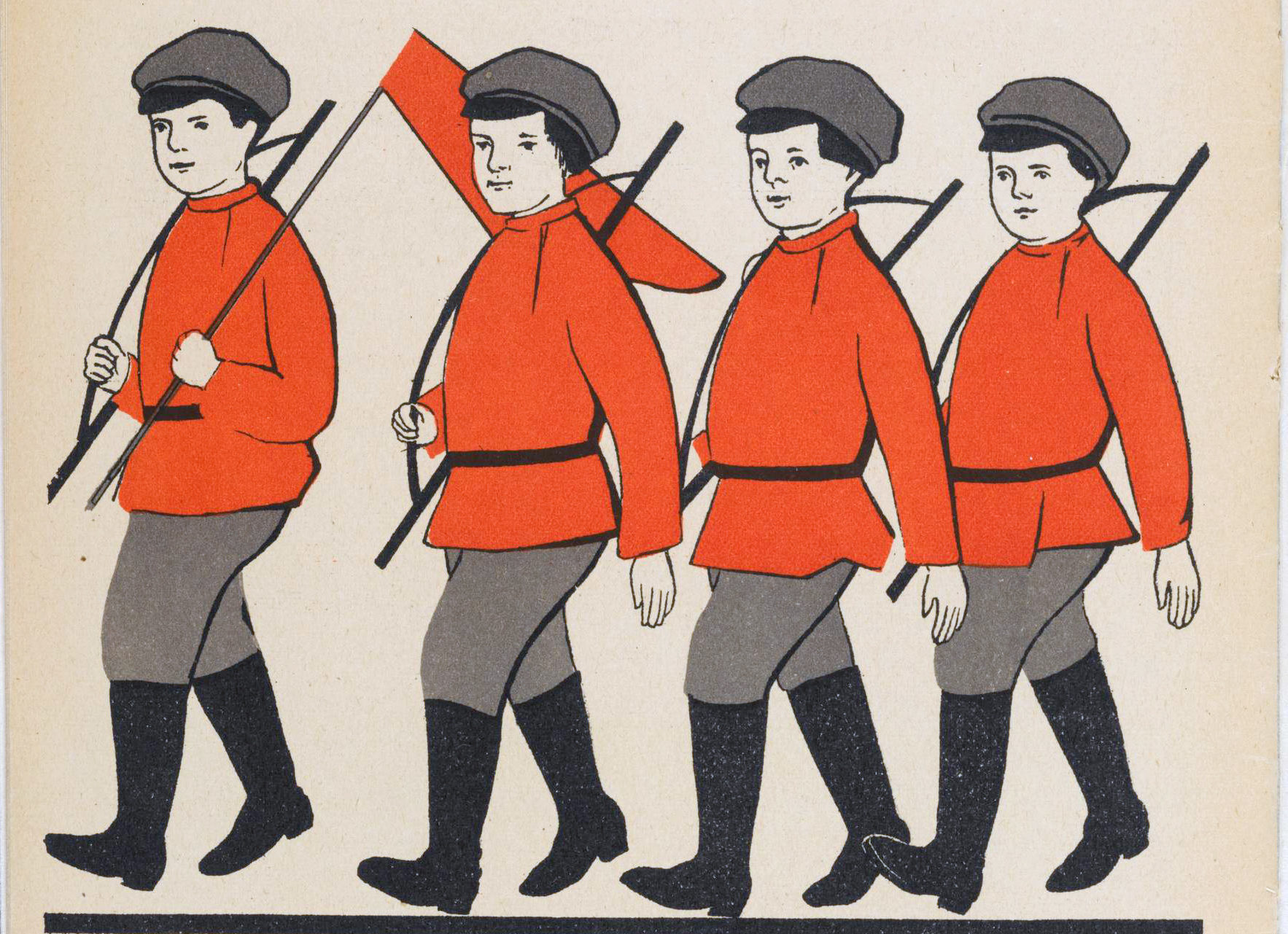The books of the Cotsen Collection show us the disparity in gender identity expressions. In this article, I have chosen to study and compare six books, representing this diversity. At first, we can divide them into two main categories: ones showing traditional gender stereotypes (Rabotnitsy (1929), Gorodskaia Ulitsa (1929)) and ones showing repetitive, asexual forms, undifferentiated or little differentiated in appearance (Kak tchetvero jeleznodorojnyhz rebiat sozdali pionerskii otriad (1926), Pervoe Maia (1928), Nash smotr (1932), Mamin most (1933)).
However, the boundaries between these categories are not as clear when we consider the combination of text and images, and the representation of different
variables: children’s appearance (clothes, hair styles and body image), ages, children’s activities and roles, their behaviors and the expression of their emotions, their relationships both among themselves and with adults. So, how combined are these two categories, which gender roles were instilled in Soviet children, and how were they conveyed?
In this paper, I will study those variables and articulate ideas of gender with concurrent or complementary notions of the family, the collective and the environment. I will show how ungendered conceptions of children coexisted with a persistence even a reinforcement of the patriarchal pattern. One of the goal is to define the Bolshevik gender reflections, taking into account their contradictions, unsaid elements and alternative projects, and the functions of the children’s books, understood in their articulation with those projects.



